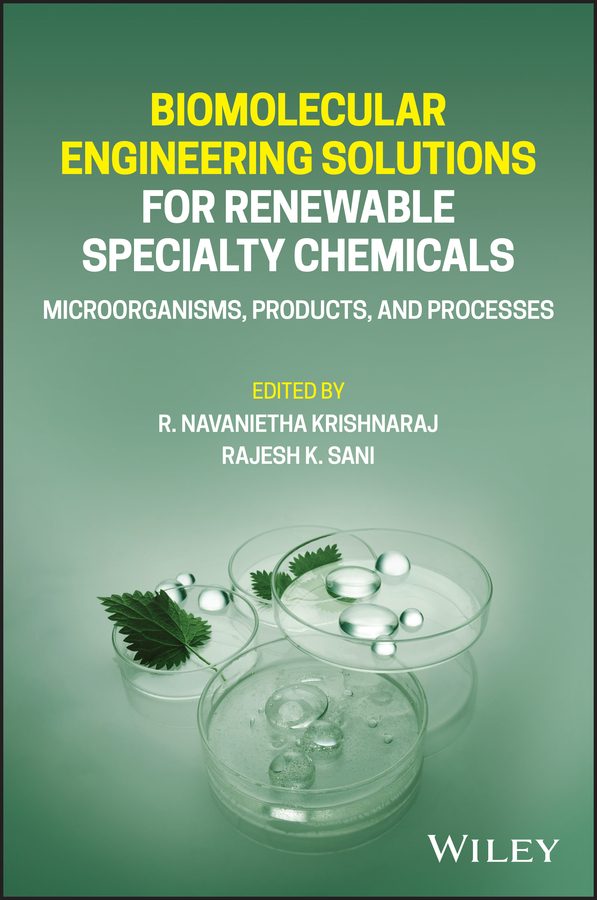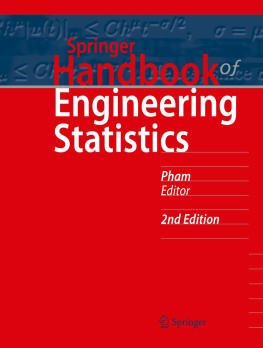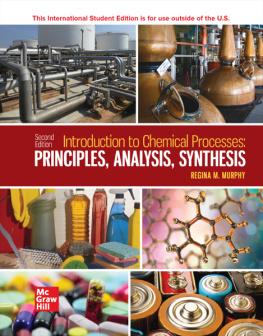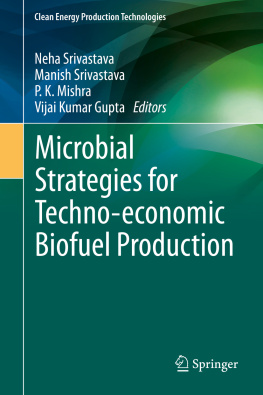
Table of Contents
List of Tables
- Chapter 1
- Chapter 2
- Chapter 3
- Chapter 4
- Chapter 5
- Chapter 6
- Chapter 8
- Chapter 9
- Chapter 10
- Chapter 11
- Chapter 13
List of Illustrations
- Chapter 1
- Chapter 2
- Chapter 3
- Chapter 4
- Chapter 5
- Chapter 6
- Chapter 7
- Chapter 8
- Chapter 9
- Chapter 10
- Chapter 11
- Chapter 12
- Chapter 13
Guide
Pages
Biomolecular Engineering Solutions for Renewable Specialty Chemicals
Microorganisms, Products, and Processes
Edited by
R. Navanietha Krishnaraj
South Dakota School of Mines and Technology
Rapid City, SD, USA
Rajesh K. Sani
South Dakota School of Mines and Technology
Rapid City, SD, USA

This edition first published 2022
2022 John Wiley and Sons, Inc.
All rights reserved. No part of this publication may be reproduced, stored in a retrieval system, or transmitted, in any form or by any means, electronic, mechanical, photocopying, recording or otherwise, except as permitted by law.Advice on how to obtain permission to reuse material from this titleis available at http://www.wiley.com/go/permissions.
The right of R. Navanietha Krishnaraj and Rajesh K. Sani to be identified as the authors of the editorial material in this work has been asserted in accordance with law.
Registered Office
John Wiley & Sons, Inc., 111 River Street, Hoboken, NJ 07030, USA
Editorial Office
111 River Street, Hoboken, NJ 07030, USA
For details of our global editorial offices, customer services, and more information about Wiley products visit us at www.wiley.com.
Wiley also publishes its books in a variety of electronic formats and by printondemand. Some content that appears in standard print versions of this book may not be available in other formats.
Limit of Liability/Disclaimer of Warranty
In view of ongoing research, equipment modifications, changes in governmental regulations, and the constant flow of information relating to the use of experimental reagents, equipment, and devices, the reader is urged to review and evaluate the information provided in the package insert or instructions for each chemical, piece of equipment, reagent, or device for, among other things, any changes in the instructions or indication of usage and for added warnings and precautions. While the publisher and authors have used their best efforts in preparing this work, they make no representations or warranties with respect to the accuracy or completeness of the contents of this work and specifically disclaim all warranties, including without limitation any implied warranties of merchantability or fitness for a particular purpose. No warranty may be created or extended by sales representatives, written sales materials or promotional statements for this work. The fact that an organization, website, or product is referred to in this work as a citation and/or potential source of further information does not mean that the publisher and authors endorse the information or services the organization, website, or product may provide or recommendations it may make. This work is sold with the understanding that the publisher is not engaged in rendering professional services. The advice and strategies contained herein may not be suitable for your situation. You should consult with a specialist where appropriate. Further, readers should be aware that websites listed in this work may have changed or disappeared between when this work was written and when it is read. Neither the publisher nor authors shall be liable for any loss of profit or any other commercial damages, including but not limited to special, incidental, consequential, or other damages.
Library of Congress CataloginginPublication Data applied for:
ISBN: 9781119771920
Cover design by Wiley
Cover image: Vetre/Shutterstock
Preface
Biocommodity Engineering
Microorganisms have been realized as promising sources for production of biocommodities such as biofuels, pharmaceuticals, organic acids, amino acids, vitamins, biopolymers, surfactants, detergents, and enzymes. They offer several advantages over the conventional chemical processes including mild operating conditions, stereospecificity of the products, environmentally benign nature, and ecofriendly. Translating the bioproducts from laboratory to the industry remains a bottleneck. Biocommodity and biomolecular engineering approaches help in overcoming these limitations, developing new products, and improving the processes.
Considering the importance of the field, this book is specifically focused on potential technologies that can help in commercializing the processes. The objective of the book is to provide advanced technologies in producing different products using improved microorganisms/enzymes. This book will also discuss on improving the microbes or enzymes using protein engineering, metabolic engineering, and systems biology approaches for converting the wastes to valueadded products.
Overall, this would be an ideal textbook for bioprocess, biorefinery, biomolecular, and biocommodity engineering courses for chemical, biochemical, and environmental engineering students. We have also included glossary and reasoning type questions at the end of each chapter. This book will also help the scientists to understand the advanced concepts in biomanufacturing. This book discusses the promising strategies that will help overcome the current limitations in the biochemical synthesis processes. The book will help the readers working in industry or research to know about the new ways for improving the efficiency of the biochemical synthesis processes.
The editors would like to thank all the authors for their valuable contribution and the Wiley editorial team for their support.
List of Contributors
R. Aanandhalakshmi
Department of Biotechnology School of Bio and Chemical Engineering
Kalasalingam Academy of Research and Education
Krishnankoil, TN
India
Veknesh Arumugam
Department of Chemical and Environmental Engineering
Faculty of Engineering
Universiti Putra Malaysia
Serdang, Malaysia
Balasubramaniem Ashokkumar
Department of Genetic Engineering
School of Biotechnology
Madurai Kamaraj University
Madurai, TN
India
Saroj Bala
Department of Microbiology
Punjab Agricultural University
Ludhiana, PB
India
Rathindra Mohan Banik
Bioprocess Technology Laboratory
School of Biochemical Engineering
Indian Institute of Technology (Banaras Hindu University)
Varanasi, UP
India
Ramiya Baskaran
Department of Biotechnology
Indian Institute of Technology Madras
Chennai, TN
India
Mohit Bibra
Zymergen Inc., Emeryville, CA
USA
Rouf Ahmad Dar
Department of Microbiology
Punjab Agricultural University Ludhiana, PB
India
Madhuri Dutta
Biochemistry and Cell Biology Laboratory
School of Basic Sciences
Indian Institute of Technology Bhubaneswar, OR
India
Santhalingam Gayathri
Department of Genetic Engineering
School of Biotechnology
Madurai Kamaraj University
Next page







